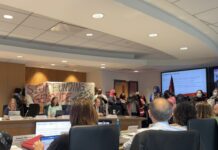A Carleton professor is breaking ground with new research on chronic pain by collaborating with two graduate students and the Ottawa Hospital.
The research, spearheaded by Michael Hildebrand, a neuroscience professor, aims to determine what causes chronic pain, and find a more effective treatment for the condition.
According to a report this year from Statistics Canada, chronic pain affects more than 6 million people in Canada. The condition can be disabling, and can severely impact quality of life.
Hildrebrand said that most medical research on chronic pain uses animal models, which is why the cause for it has not been determined in humans yet.
“A lot of what we know about how pain signaling works and what goes wrong is based on animal research,” Hildebrand said. “In trying to develop new treatments, often there’s a bit of a jump in terms of identifying things . . . we’re trying to address a gap in that process.”
Hildebrand said the research is especially benefited by the use of human cells. He added that Dr. Eve Tsai, a neurosurgeon at the Ottawa Hospital, provided them access to the human tissue.
“Before I started working with her, I was asking all these questions with the animal models,” Hildebrand said. “But she’s helped in terms of access to [human] tissue and to start investigating these questions.”
Hildebrand’s research uses a process to test cells called electrophysiology—a branch of physiology that measures the electrical properties of cells and tissues.
Annemarie Dedek, a Carleton PhD student, said electrophysiology is what attracted her to the project.
“I love looking at micro-level functioning, and seeing how that affects the bigger picture,” Dedek said.
She added that the project has had great findings so far, but more research needs to be conducted.
The group received a grant of $573,750 to be used over five years from the Canadian Institutes of Health Research to continue their work.
“It helps me in that it provides the resources we need to really tackle this medical challenge with the tools we need,” Hildebrand said about the grant. “It gives stability over a long period, because this type of research takes years.”
“It doesn’t necessarily mean that we’ve cured everything,” Dedek said.
The team is currently in the process of getting their research published in a journal, and is already working on follow-up studies, Hildrebrand said.
“I wouldn’t say it is in the short-term,” he said. “But in the long term, it suggests there is hope and there’s new approaches we’re trying to use, and new ideas to hopefully develop new treatments.”
Graphic by Paloma Callo






